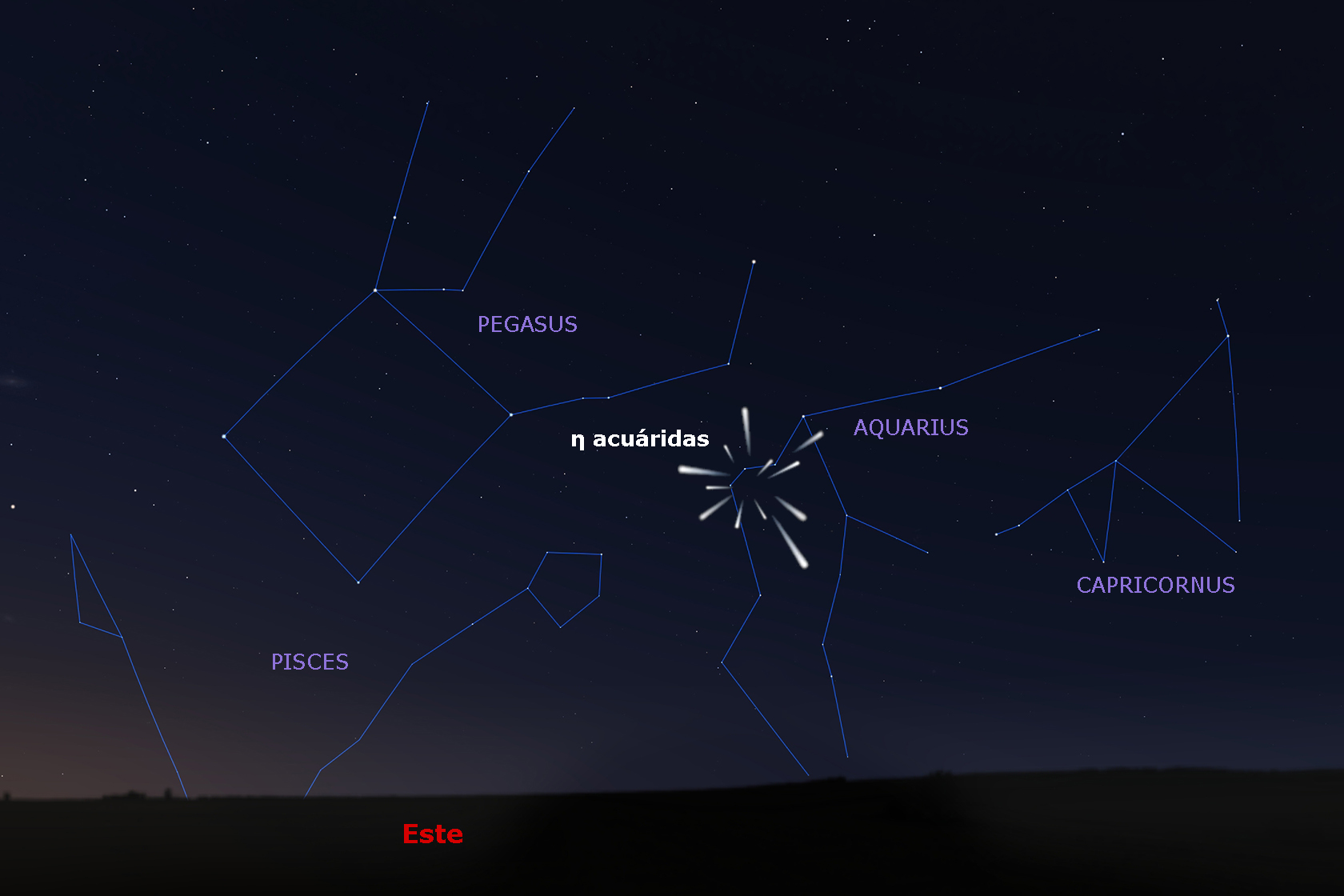η Aquarids
The meteor shower of the η Aquarids is visible every year between April 19 and May 28. They are best observed from places located in the tropics, such as the Canary Islands, and in the southern hemisphere, although they can also be observed from the northern hemisphere.
The η Aquarids are associated with Halley’s comet, as is the meteor shower of the Orionids, which takes place in October. The meteors of the η Aquarids have an activity rate of between 40 and 85 meteors per hour and a fairly high speed, about 66 kilometers per second.

The Halley comet, observed from Earth in 1986.
What to expect in 2025?
The maximum of this shower will take place in May 6 at around 3 a.m. UT, therefore that night will be the best for the observation. The radiant will rise at 3 a.m. and will be climbing the sky towards the sunrise, and the observation will be best by the end of the night. The first quarter will occur two days earlier, and it will also hamper the observations in the first part of the night.
Why do they happen?
The meteors of the η Aquarids are fragments of comet 1/P Halley. Halley’s Comet orbits the Sun every 76 years and was last seen from Earth in 1986. Like every year around this time, the Earth passes through a ring populated with the fragments from Halley’s Comet. When one of these fragments (or meteoroids) comes into contact with the Earth’s atmosphere, it is burnt by friction with the air, creating the luminous glow that we know as a meteor or shooting star. Halley’s comet is also the origin of another meteor shower, the Orionids, which have their maximum around October 21.
The corresponding meteor shower seems to have a single center of origin, a point from which all shooting stars seem to emerge. That point is called ‘radiant’ and its location is used to name the meteor shower. Thus, the η Aquarids have their radiant in the star η of the constellation of Aquarius.

The 'radiant' of the η Aquarids.
How to see the η Aquarids?
They can be observed from any location as long as it provides a dark sky. It is preferable to observe from a place that has few obstacles that limit our sight (such as buildings, trees or mountains), and not to use optical instruments that reduce our field of vision. Even though the η Aquarids seem to come from the constellation of Aquarius (hence its name), they can be seen anywhere in the sky. It is advisable to look at the darkest areas, in the opposite direction to the position of the Moon if the observation is made before it sets. The most comfortable strategy is to lie down and wait for your eyes to get used to the darkness.
